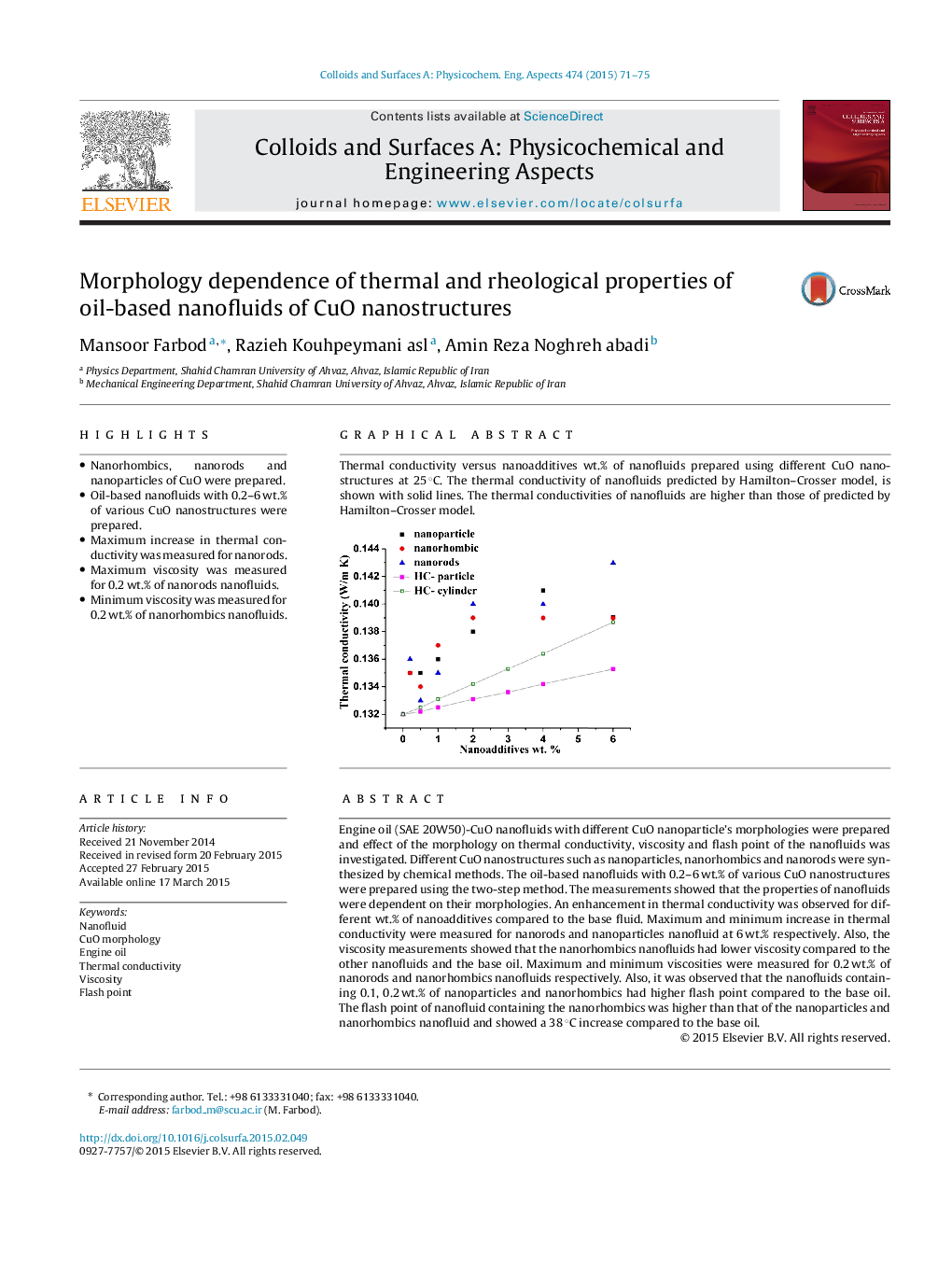| کد مقاله | کد نشریه | سال انتشار | مقاله انگلیسی | نسخه تمام متن |
|---|---|---|---|---|
| 592298 | 1453899 | 2015 | 5 صفحه PDF | دانلود رایگان |

• Nanorhombics, nanorods and nanoparticles of CuO were prepared.
• Oil-based nanofluids with 0.2–6 wt.% of various CuO nanostructures were prepared.
• Maximum increase in thermal conductivity was measured for nanorods.
• Maximum viscosity was measured for 0.2 wt.% of nanorods nanofluids.
• Minimum viscosity was measured for 0.2 wt.% of nanorhombics nanofluids.
Engine oil (SAE 20W50)-CuO nanofluids with different CuO nanoparticle's morphologies were prepared and effect of the morphology on thermal conductivity, viscosity and flash point of the nanofluids was investigated. Different CuO nanostructures such as nanoparticles, nanorhombics and nanorods were synthesized by chemical methods. The oil-based nanofluids with 0.2–6 wt.% of various CuO nanostructures were prepared using the two-step method. The measurements showed that the properties of nanofluids were dependent on their morphologies. An enhancement in thermal conductivity was observed for different wt.% of nanoadditives compared to the base fluid. Maximum and minimum increase in thermal conductivity were measured for nanorods and nanoparticles nanofluid at 6 wt.% respectively. Also, the viscosity measurements showed that the nanorhombics nanofluids had lower viscosity compared to the other nanofluids and the base oil. Maximum and minimum viscosities were measured for 0.2 wt.% of nanorods and nanorhombics nanofluids respectively. Also, it was observed that the nanofluids containing 0.1, 0.2 wt.% of nanoparticles and nanorhombics had higher flash point compared to the base oil. The flash point of nanofluid containing the nanorhombics was higher than that of the nanoparticles and nanorhombics nanofluid and showed a 38 °C increase compared to the base oil.
Thermal conductivity versus nanoadditives wt.% of nanofluids prepared using different CuO nanostructures at 25 °C. The thermal conductivity of nanofluids predicted by Hamilton–Crosser model, is shown with solid lines. The thermal conductivities of nanofluids are higher than those of predicted by Hamilton–Crosser model.Figure optionsDownload as PowerPoint slide
Journal: Colloids and Surfaces A: Physicochemical and Engineering Aspects - Volume 474, 5 June 2015, Pages 71–75